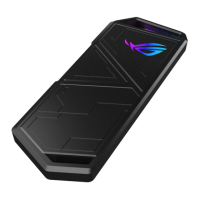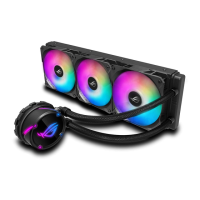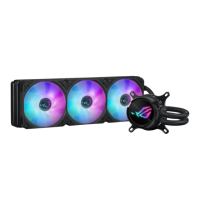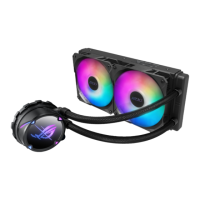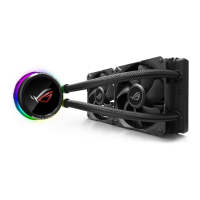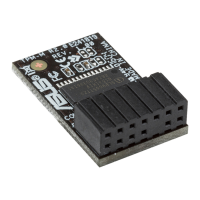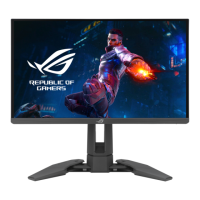
Do you have a question about the Asus ROG SWIFT PRO and is the answer not in the manual?
| Panel Type | OLED |
|---|---|
| Headphone Jack | Yes |
| Adaptive Sync | Yes |
| Color Gamut | 99% DCI-P3 |
| Connectivity | DisplayPort 1.4, HDMI 2.1 |
| Viewing Angle | 178° (H) / 178° (V) |
| G-Sync Compatible | NVIDIA® G-SYNC® Compatible |
Welcomes the user and highlights the monitor's features and viewing experience.
Lists all included items to verify in the product package.
Details the monitor's front and side physical features and button layout.
Identifies and describes the various ports and connectors on the back of the monitor.
Explains the monitor's support for G-SYNC and HDR technologies and their features.
Outlines FCC compliance rules and user responsibilities for radio frequency interference.
Details Canadian regulatory compliance for digital apparatus and radio noise emissions.
Covers fire/shock hazards, opening cabinet, ventilation, and environmental conditions for safe operation.
Details power cord connection, surge protection, UL listed computer usage, and power adapter specifics.
Explains how to use cords or chains to secure the monitor to a wall to prevent falling.
Provides guidance on safe lifting, handling, and cleaning procedures for the monitor.
Describes normal behaviors like screen flickering, uneven brightness, or temporary afterimages.
Explains symbols and text conventions used in the manual for clear understanding.
Guides users to ASUS websites and optional documentation for further product details and updates.
Step-by-step instructions for attaching the monitor to its stand.
Explains how to organize cables using the input/output port cover for a tidy setup.
Provides recommended angles for tilt, swivel, and height adjustment for comfortable viewing.
Guides on how to detach the monitor arm for VESA wall mount compatibility.
Instructions for connecting DisplayPort/HDMI cables and USB upstream cable for data transfer.
Details the procedure for powering on the monitor and checking the power indicator status.
Explains how to navigate and use the On-Screen Display (OSD) menu for settings adjustment.
Details the setup and usage of the NVIDIA Reflex Latency Analyzer function for system performance.
Explains Ultra Low Motion Blur (ULMB) settings and their availability for reducing motion blur.
Covers overclocking for maximum refresh rates and OD for response time improvement.
Describes GamePlus features like FPS Counter, Crosshair, Timer, and Display Alignment for gaming.
Details various GameVisual modes for different scenarios like Scenery, Racing, Cinema, and RTS/RPG.
Explains how to adjust brightness and contrast levels, including variable backlight settings.
Covers aspect ratio settings and the Blue Light Filter for eye comfort and reduced blue light.
Discusses sRGB and Wide Gamut recommendations and gamma settings for color accuracy.
Details various color temperature modes available for user preference.
Explains how to select input sources and manage auto-switch functionality for convenience.
Describes how to assign functions like GamePlus or GameVisual to shortcut buttons for quick access.
Covers enabling and customizing Aura Sync and Aura RGB lighting effects for synchronized devices.
Details system settings like language selection, sound options, and auto brightness adjustments.
Explains volume control, mute function, and support for high-resolution audio via USB connection.
Details power settings like Standard Mode, Power Saving Mode, and HDR warning message controls.
Covers OSD position, timeout duration, and background transparency adjustments.
Describes audio enhancement modes like Footstep Enhancement, Gunshot Equalizer, and Surround Sound.
Steps to activate Aura Sync and connect to Armoury Crate for RGB lighting control.
Lists detailed technical parameters like panel type, resolution, response time, and physical dimensions.
Provides detailed drawings and measurements of the monitor's physical size and adjustable ranges.
Addresses common problems like the power LED not turning on or screen image issues.
Solutions for screen image defects, wave patterns, and HDR content playback problems.
Troubleshooting steps for NVIDIA Reflex Latency Analyzer display issues and incorrect readings.
Lists supported resolutions and frame rates for HDMI input connections.
Lists supported resolutions and frame rates for DisplayPort input connections.
Details supported timings for Esports Pro Mode via DisplayPort with DSC and overclocking options.
Notes on interlace support and requirements for Turing-based GeForce GPUs for certain features.
